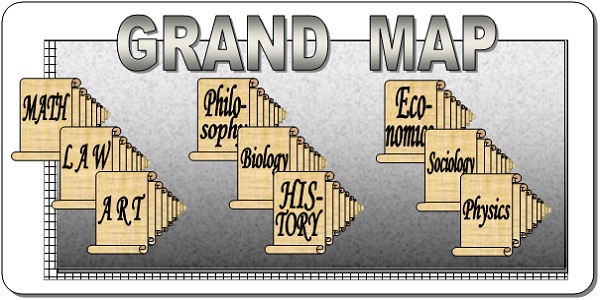
December 11,2017
After showing on the previous page how to build (mathematically) a grand map, attention is then turned to its contents. Although the contents of the pages that make up the grand map has already been introduced, it is important to clarify and reinforce a concept that is being presented to the reader: That it becomes possible to geometrically create a mathematical structure "out of" information.
The concept of an informational geometric structure is actually not so unfamiliar. Look at any novel or textbook; their pages are arranged numerically in a geometric manner. The only thing new here is that we are generating a gargantuan amount of pages too large for the Observable Universe and that the pages represent to a degree all information. Instead of a book, we made a map (also too large for the Observable Universe).*
(*) We could have defined and made a grand book by just taking our stacks of generated pages and make one large bound stack. The grand book will have the same exact pages as the grand map only the geometric structure of the book would be linear (versus planar for the map). We chose our thought experiment to follow the map route because the map clearly shows off the critical geometric grand pattern that runs through all pages of information.
The grand book as a philosophical concept and a mathematical structure in discrete philosophy is also very important and is thoroughly utilized, especially when presented as a type of informational spectrum in physics (from first page to last page of data).